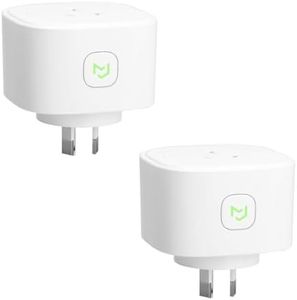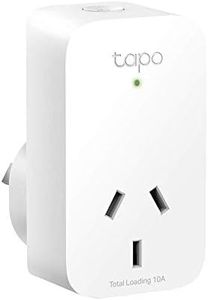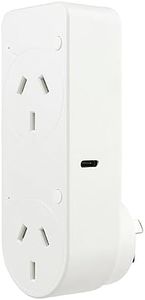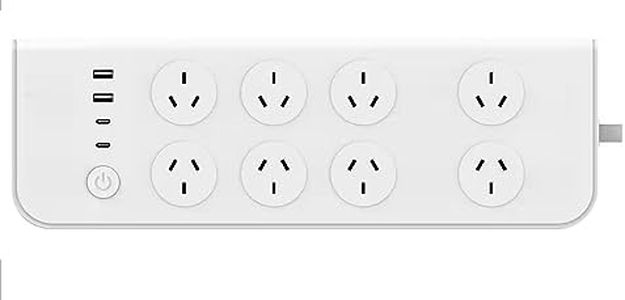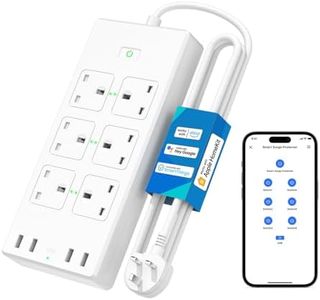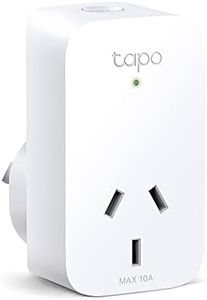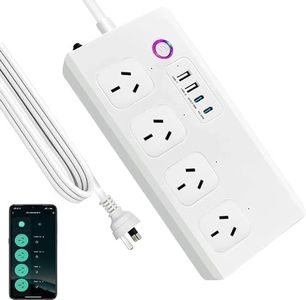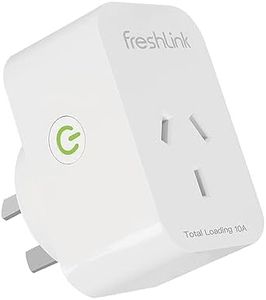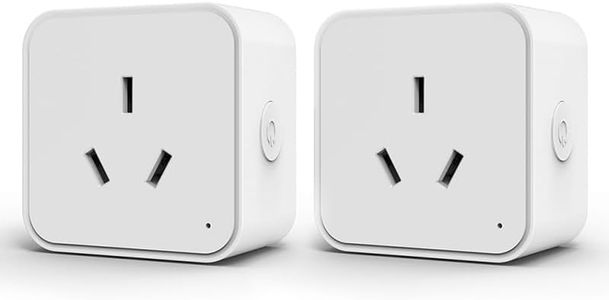We Use CookiesWe use cookies to enhance the security, performance,
functionality and for analytical and promotional activities. By continuing to browse this site you
are agreeing to our privacy policy
10 Best Remote Control Outlets
From leading brands and best sellers available on the web.Buying Guide for the Best Remote Control Outlets
When shopping for remote-control outlets, the goal is to make it easier and safer to turn your electronic devices on or off without having to physically access them. These handy gadgets are perfect if you want to control lamps, fans, holiday lights, or other small appliances with the click of a button—or, in some cases, with your smartphone. To choose the right one, you should examine a few important features that determine how well the outlet will fit your daily habits, device setup, and the size of your space.RangeRange tells you how far you can be from the outlet for the remote to work effectively. Some outlets work within single rooms (usually around 30 to 50 feet), while others can be triggered from further away, sometimes even through walls (up to 100 feet or more). If you want to control devices across large rooms or on different floors, a longer range is better. On the other hand, a shorter range works fine if you’re only planning to use the remote nearby.
Number of Outlets/ChannelsThis spec tells you how many individual outlets or devices the system can control. Some systems include a single remote outlet, others come in packs of 2-5 or more, each controlled separately or together. When picking, consider how many devices you want to control independently. If you have several lamps or gadgets in one area, multiple outlets with dedicated buttons or channels on the remote will serve you best.
Remote TypeRemote-control outlets can use simple physical remotes, smartphone apps, or even connect with smart home assistants (like voice control). Physical button remotes are straightforward and reliable, while those with smartphone compatibility offer more customized control, schedules, and sometimes integration with more smart home devices. If you prefer simplicity and instant response, physical remotes work well. If you want more flexibility or automation, look for outlets with app support or smart assistant compatibility.
Maximum Load/Power RatingThis specification shows the highest amount of electrical power (usually measured in amps or watts) the outlet can safely handle. Some remote-control outlets can only be used for low-power devices like lamps, while others can handle heavier loads such as heaters or kitchen appliances. Always check your devices’ power requirements and make sure the outlet can handle them. For safety and performance, never exceed this rating.
Plug Type and SizeRemote-control outlets come in different plug types and sizes. Some are compact and won’t block other nearby outlets, while others are bulkier, which might be an issue if wall space is limited or you want to use multiple outlets on the same panel. Consider your outlet layout and make sure the remote-control unit won’t interfere with other plugs or furniture.
Ease of SetupThe simplicity of pairing or programming each remote or outlet matters, especially if you’re not tech-savvy. Some models let you use them right out of the box with minimal effort, while others require more complicated syncing or app setup. If you value plug-and-play convenience, look for models that advertise easy or automatic setup.
Indoor vs. Outdoor UseSome remote-control outlets are designed for indoor use only, while others are rated for outdoor conditions and can handle moisture, rain, and temperature changes. If you plan to control outdoor lighting or decorations, make sure to choose an outlet specifically labeled for outdoor use, with adequate waterproof ratings.
